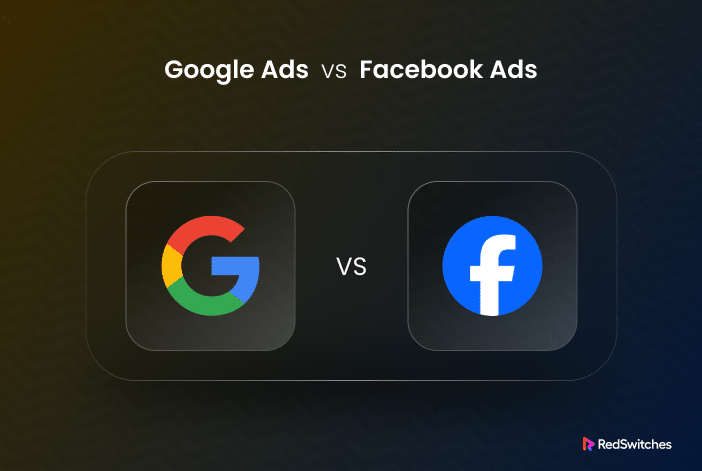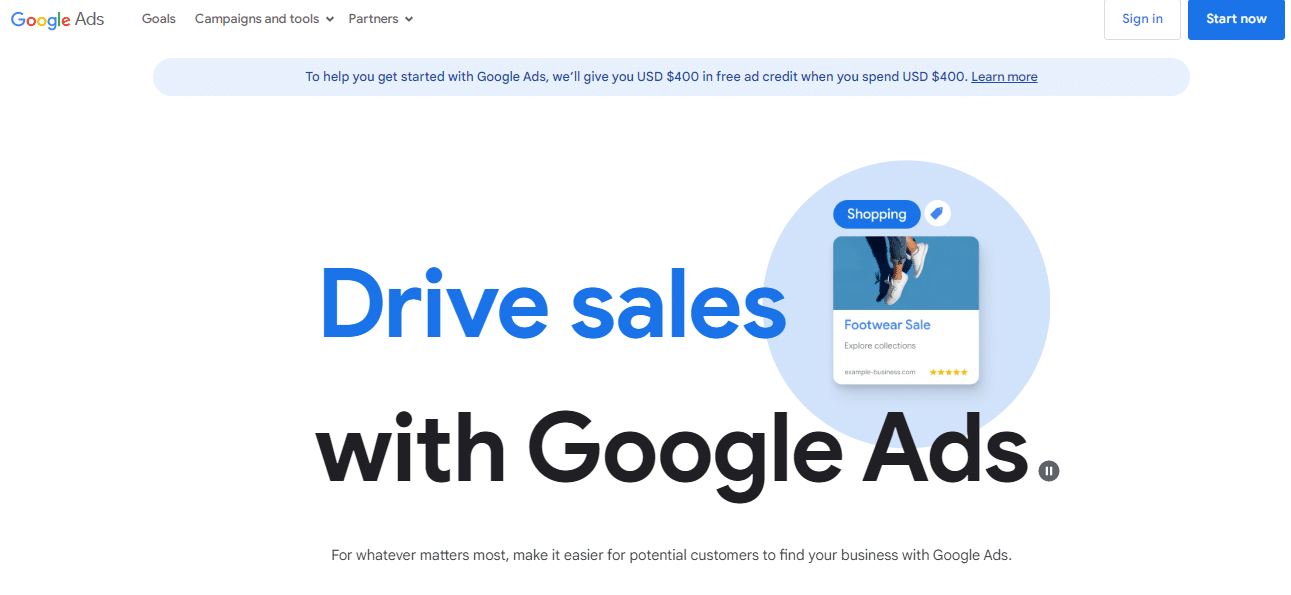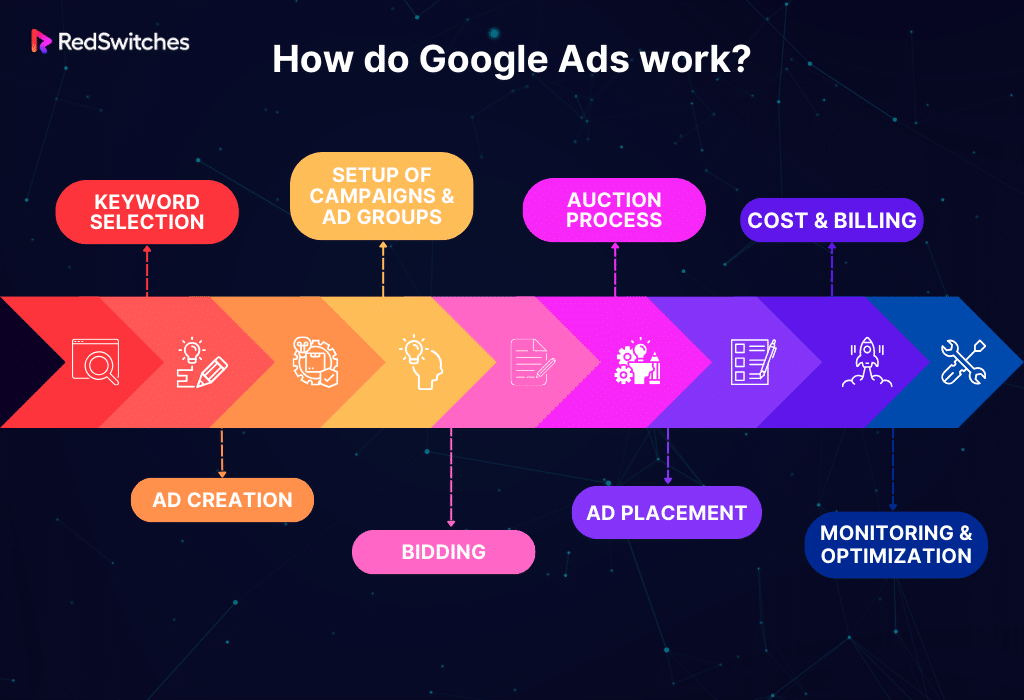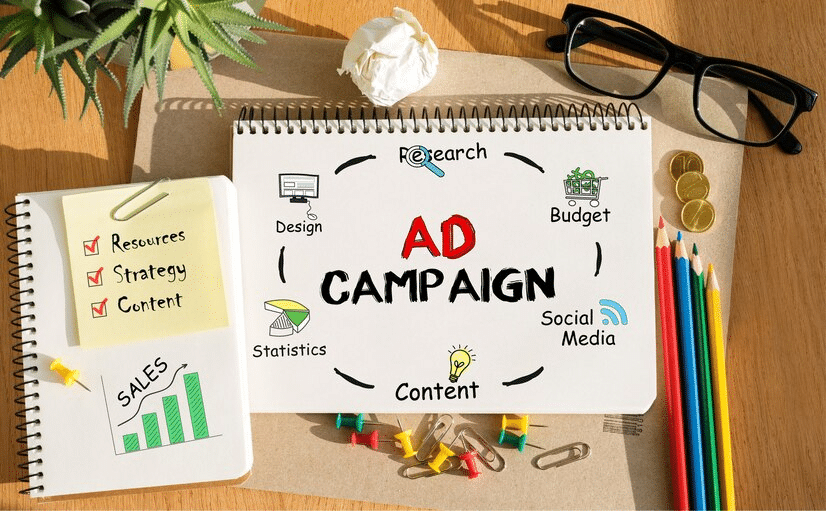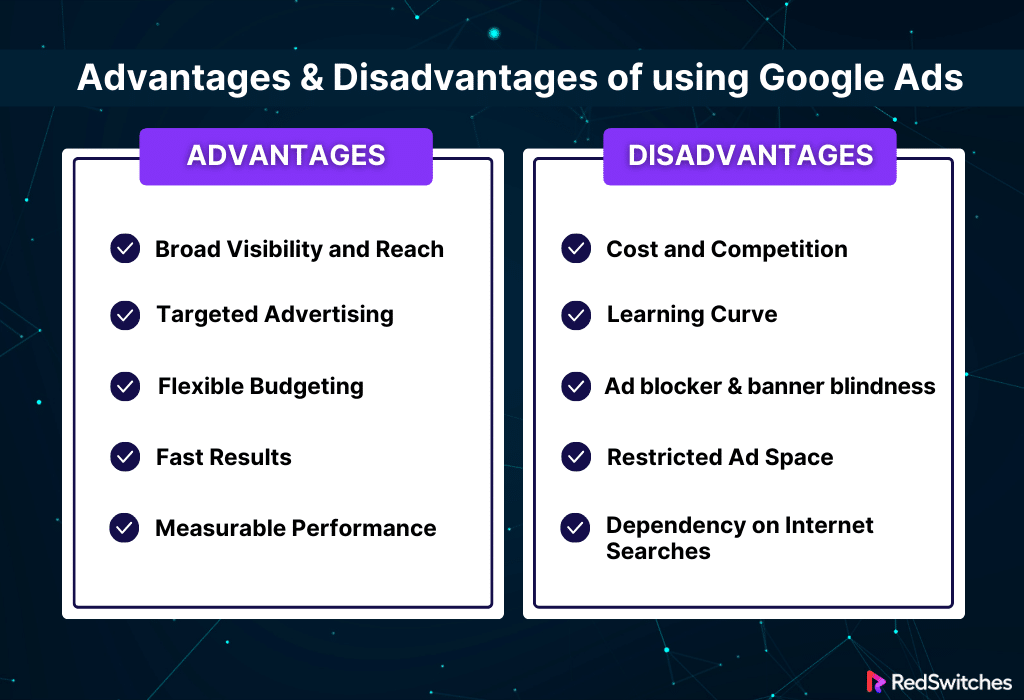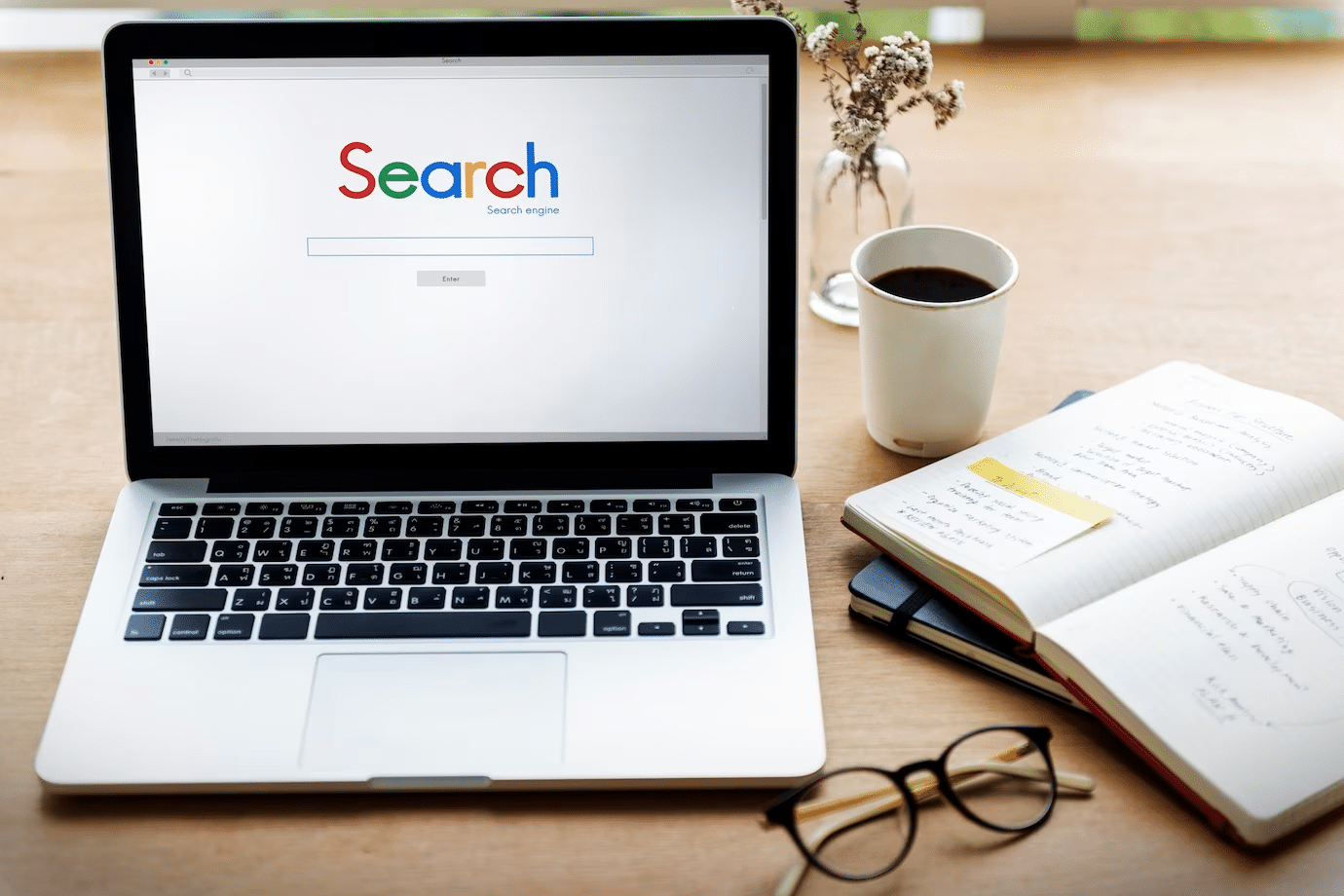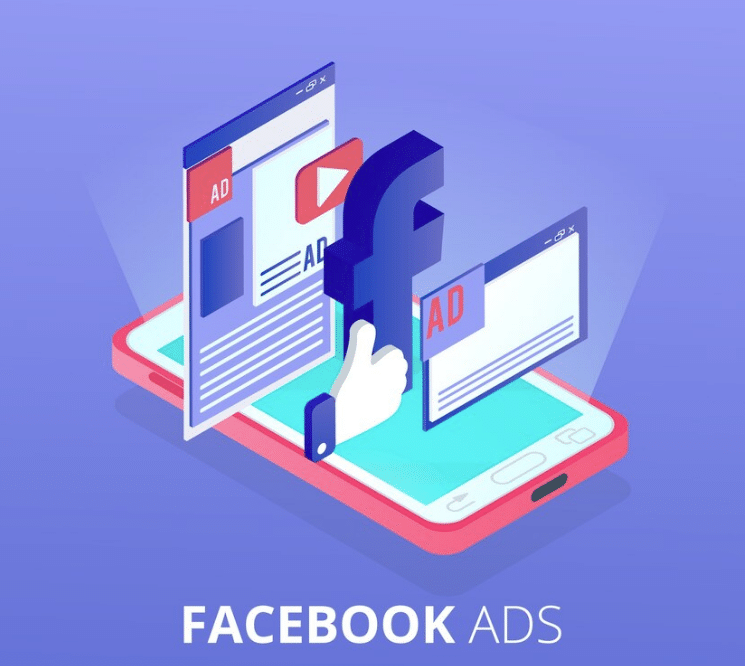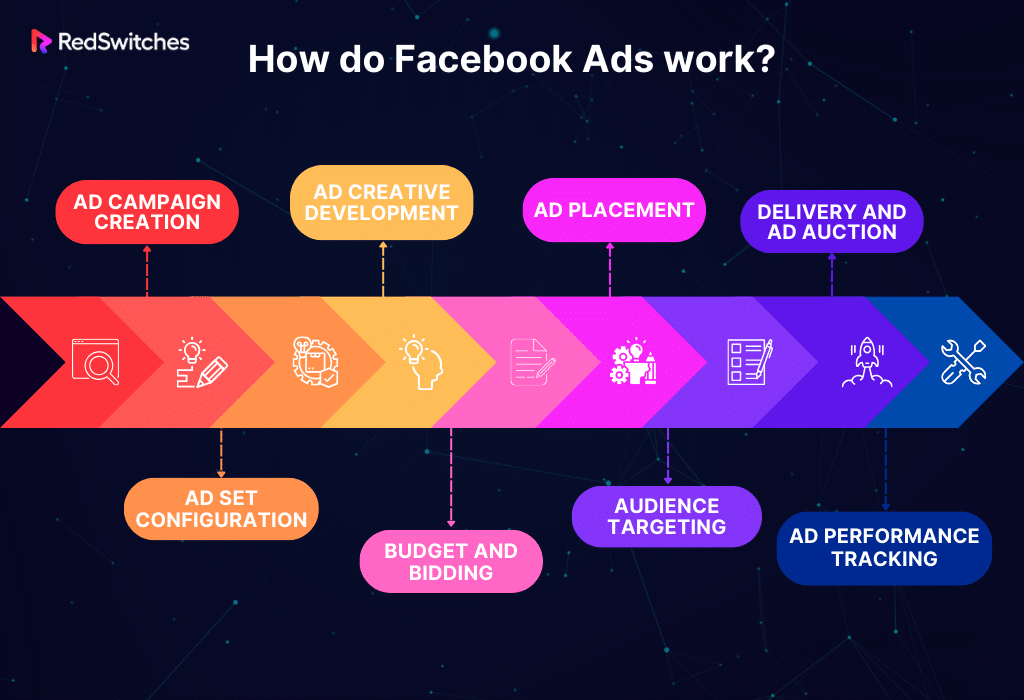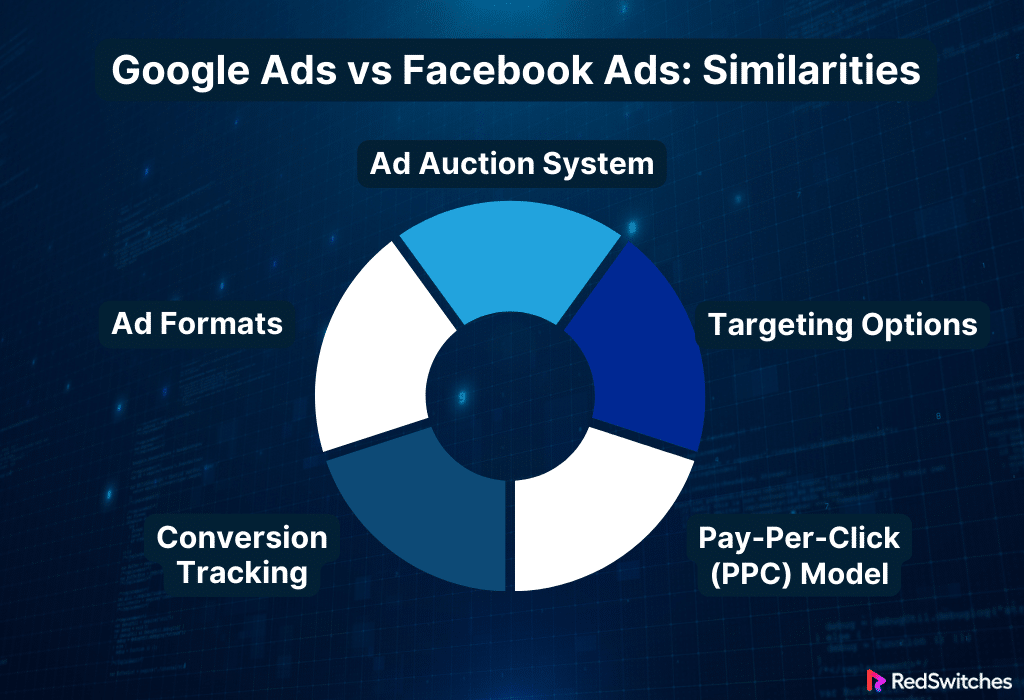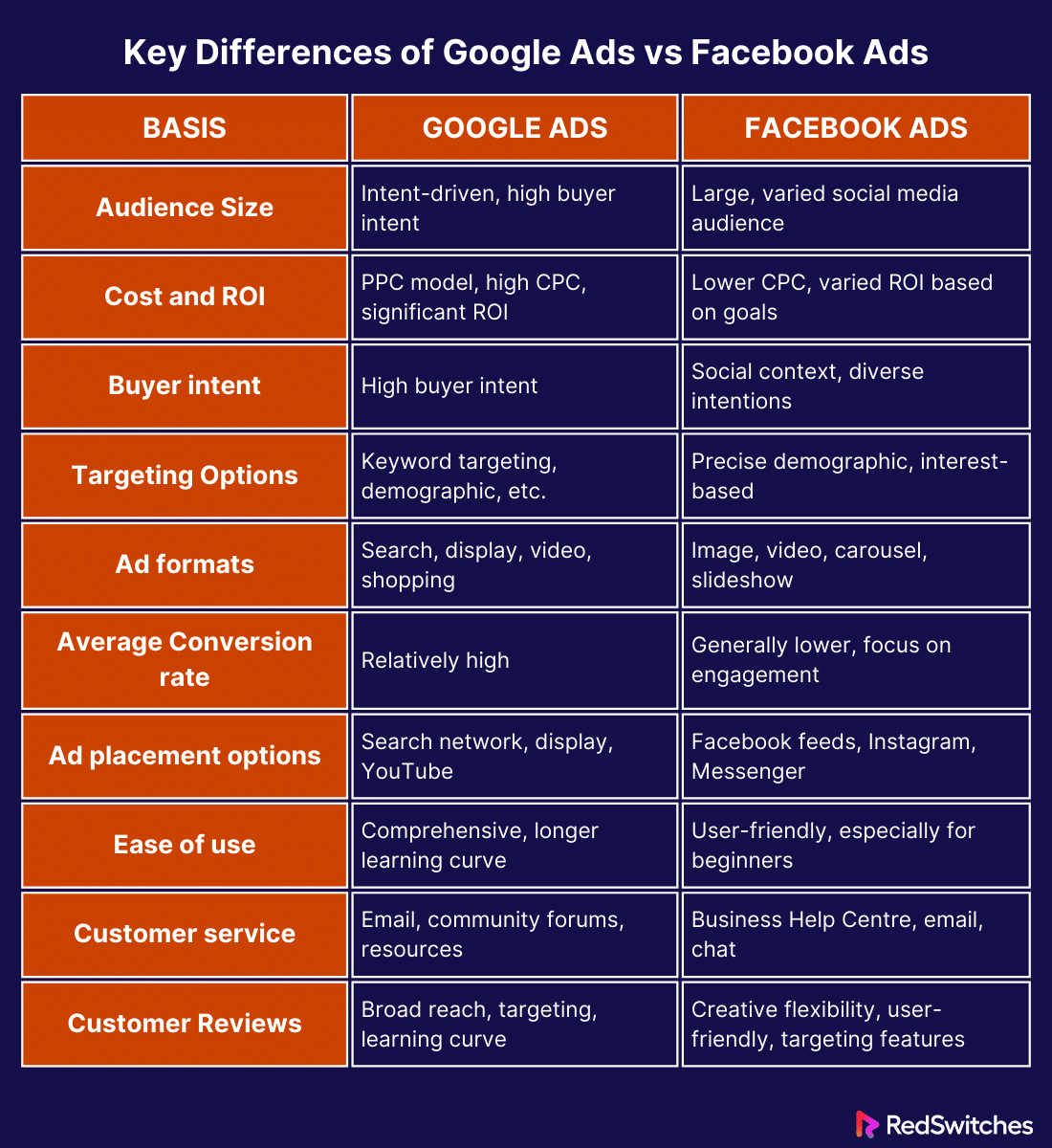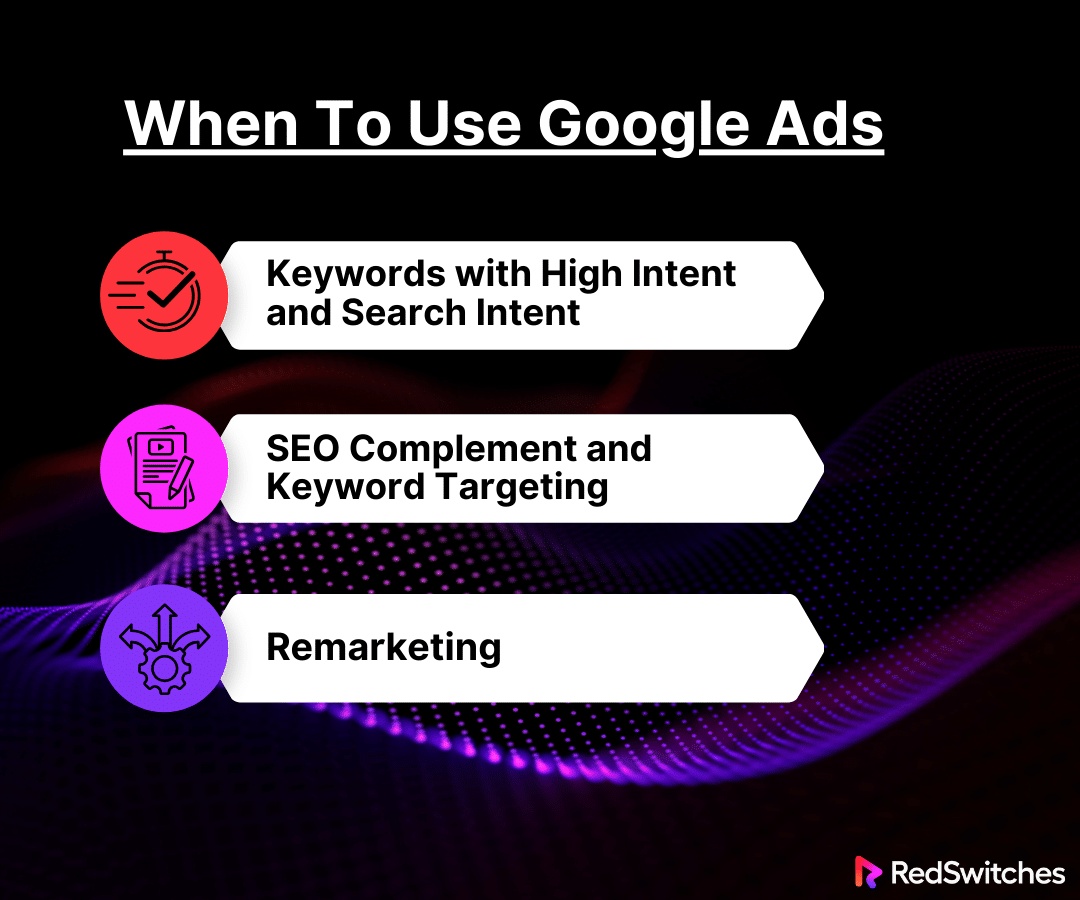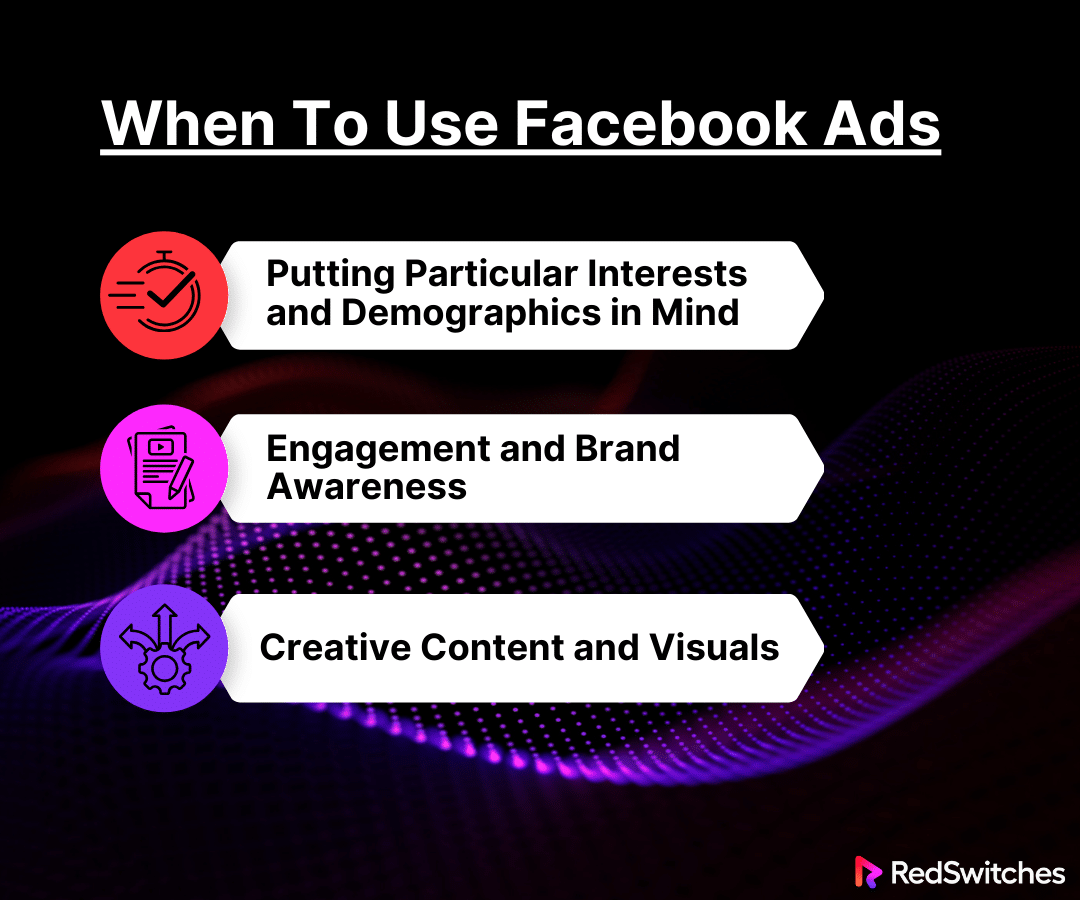Key Takeaways
- Google Ads target high-intent searches; Facebook Ads boost engagement and brand awareness.
- Google Ads excels in keyword targeting; Facebook Ads offers demographic and interest-based targeting.
- Google Ads suits direct sales with immediate intent; Facebook Ads nurtures leads over time.
- Combining both platforms enhances the overall marketing strategy, covering all funnel stages.
- Use Google for quick visibility and conversions; and Facebook for community building and storytelling.
- Synergize Google and Facebook for cross-channel remarketing and comprehensive audience targeting.
In the ever-changing world of digital marketing, there’s a lot of buzz about the debate between Google Ads and Facebook Ads. To make the most of these top online advertising platforms, it’s crucial to understand their distinct features, factors to consider, and strengths. Navigating their intricacies requires a solid awareness of what each platform brings to the table. The decision between Facebook’s substantial social media reach and Google’s vast search network becomes crucial as companies attempt to maximize their online visibility.
This detailed guide breaks down the subtleties of the Google Ads vs Facebook Ads debate, shedding light on the crucial factors that can shape your advertising strategy and drive your company towards success online. Come along as we examine the salient features that distinguish these platforms and delve into the strategic aspects of making wise marketing selections.
Table Of Contents
- Key Takeaways
- What are Google Ads?
- What are Facebook Ads?
- Similarities of Google Ads vs Facebook Ads
- Key Differences of Google Ads vs Facebook Ads
- Google Ads vs Facebook Ads: Audience Size
- Google Ads vs Facebook Ads: Cost and ROI
- Google Ads vs Facebook Ads: Buyer Intent
- Google Ads vs Facebook Ads: Targeting Options
- Google Ads vs Facebook Ads: Ad Formats
- Google Ads vs Facebook Ads: Average Conversion Rate
- Google Ads vs Facebook Ads: Ad Placement Options
- Google Ads vs Facebook Ads: Ease of Use
- Google Ads vs Facebook Ads: Customer Service
- Google Ads vs Facebook Ads: Customer Reviews
- Google Ads vs Facebook Ads: When To Use Each
- Best Alternatives
- Conclusion
- FAQs
What are Google Ads?
Credits: GoogleAds
Google’s pay-per-click (PPC) platform, known as Google Ads, enables companies to appear on Google’s properties. Businesses can use Google advertisements to display advertisements, shopping ads, YouTube ads, and more. The most popular kind of Google Ads advertisement is the search ad, which shows up on the search engine results page (SERP) for searches related to the advertiser’s goods and services.
It’s a performance-based and reasonably priced advertising solution because advertisers only pay when customers click on their advertisements. With the extensive suite of targeting, analytics, and campaign management tools that Google Ads offers, advertisers can customize their campaigns to target specific audiences and track the efficacy of their ads in real time.
How do Google Ads Work?
After learning the definition of Google Ads, we will discuss the working procedure of Google Ads.
Keyword Selection
Advertisers begin by compiling a list of pertinent keywords that consumers may use to look for goods or services. These keywords are essential since they dictate where and when the advertising will show.
Ad Creation
Following that, marketers craft attention-grabbing advertisements with a headline, description, and URL. The ad material (or content) aims to get viewers to click and visit their website.
Setup of Campaigns and Ad Groups
Google AdWords groups advertisements into campaigns. A campaign is made up of several connected ad groups, and each ad group has some comparable advertisements. With this hierarchical framework, advertisers may efficiently manage and organize their adverts.
Bidding
The most amount of money that advertisers are ready to pay when a user clicks on their advertisement is known as their bid. The bid determines the ad’s Ad Rank in the auction, which is then paired with the ad’s Quality Score (a metric for relevance and quality).
Auction Process
When a user submits a Google search query, an auction is started. The bid amount, ad quality, and ad extensions are just a few variables that Google’s algorithm considers when deciding which advertisements to display and in what sequence.
Ad Placement
Relevant partner websites or Google’s search engine results pages (SERPs) host the winning ads. Advertisers’ bids and Quality Scores significantly influence the positioning and exposure of advertisements.
Credits: Freepik
Cost & Billing
Under the pay-per-click (PPC) model, advertisers are only billed when a user clicks on their advertisement. The competition for the selected keywords might affect the actual cost per click (CPC) in several ways.
Monitoring and Optimization
Using the Google Ads dashboard, advertisers keep a close eye on the effectiveness of their advertisements. Essential parameters, including return on investment (ROI), conversion rate, and click-through rate (CTR), are analyzed. Advertisers can enhance campaign effectiveness by modifying bids, improving ad content, or optimizing targeting based on this data.
What Is a website? Explore its 4 components in this detailed guide.
Advantages and Shortcomings of Using Google Ads
We will focus on the advantages and disadvantages of using Google Ads.
Advantages
Broad Visibility and Reach
As the most popular search engine in the world, Google offers advertisers a level of exposure and unmatched reach. With Google adverts, companies can reach a large audience actively looking for their products or services by displaying their adverts to them.
Targeted Advertising
Google AdWords enables fine-grained targeting according to user behavior, location, demographics, and keywords. By presenting ads to a highly relevant audience, this level of granularity increases the probability of conversions and sales.
Flexible Budgeting
Advertisers are in charge of their spending allocations in Google Ads. You can establish daily or campaign-specific expenditure caps to ensure that advertising expenses are within your means, regardless of how much money you have to spend.
Fast Results
Google Ads can produce fast results, unlike certain conventional marketing channels. Ads on search results pages can show practically instantly after a campaign is set up, allowing businesses to test and modify their marketing tactics quickly.
Measurable Performance
Google Ads gives marketers access to powerful analytics tools that let them monitor the effectiveness of their campaigns in real-time. To evaluate the success of the advertising campaigns, metrics like click-through rate (CTR), conversion rate, and return on investment (ROI) can be examined.
Disadvantages
Cost and Competition
In highly competitive industries and for popular keywords, running a Google AdWords campaign costs can become prohibitive. Wars of bidding for the best ad places have the potential to drive up expenses and reduce advertisers’ return on investment.
Learning Curve
A certain level of proficiency is needed to navigate Google Ads effectively. For novices, comprehending keyword research, bidding tactics, and campaign optimization can be complicated, which could result in less-than-ideal campaign results.
Ad Blocker and Banner Blindness
Some users block ads, which makes Google Ads less visible. Furthermore, consumers may experience “banner blindness,” the deliberate or unintentional ignoring of web advertisements, decreasing display advertising’s overall efficacy.
Restricted Ad Space
There is a lot of competition and limited space for ads on Google search results pages. Due to this restriction, not all advertisers can claim the top spots, which could lower the exposure of their advertisements.
Dependency on Internet Searches
A significant source of information for Google Ads is user searches. Compared to other advertising channels, Google may not be as successful in reaching potential customers if the target audience for a business is not actively using the platform for their inquiries.
Explore these 5 unmissable tips to improve your Google Core Web vitals in 2024.
Three Examples of Successful Ad Campaigns that Have Used Google Ads
Credits: Freepik
After discussing the merits and disadvantages of Google Ads, let’s discuss three examples of the most successful ad campaigns. The following three e-commerce businesses effectively reach potential clients by using Facebook Ads’ captivating strategies.
Rothy’s
Rothy’s is an environmentally conscious footwear brand that has amassed a sizable social media following, with over 300,000 followers across Facebook and Instagram. A new product is blurred out using a blur filter in a pre-launch video advertisement to spark curiosity. This eye-catching article raises expectations and entices prospective buyers to revisit Rothy’s website when the product is revealed.
Kirrin Finch
Kirrin Finch is a clothing brand that designs pieces with menswear influences that fit female and non-binary bodies. The brand frequently posts pictures of satisfied customers wearing their clothes to weddings. This kind of customer feature shows how Kirrin Finch can make a meaningful and personal day for their customers, which builds a connection between the brand and the audience. It provides prospective clients with a favorable testimonial as well.
Cadette
Cadette is a handcrafted jewelry brand highlighting the artistry of creating each of its unique pieces. A Facebook advertisement showcasing the steps involved in producing one of Cadette’s best-selling items was posted. This ad offered a behind-the-scenes glimpse into the meticulous craftsmanship that sets their jewelry apart.
What are Facebook Ads?
Credits: Freepik
Facebook Ads is the social network’s advertising platform, promoting goods and services through the publication of text, pictures, or videos. Companies extensively utilize it as a marketing channel due to its vast readership (approximately 2.2 billion) and excellent segmentation opportunities.
Facebook Ads offers various ad forms, such as slideshow ads, carousel ads, picture and video ads, and more. Advertisers may also use tools like bespoke audiences, which let them target people who have already interacted with their brand. Facebook Ads gives advertisers access to comprehensive statistics and insights so they can assess the effectiveness of their ads and make informed decisions based on facts.
Facebook advertising provides you the option to select from the following goals:
- Appreciation: These goals pique people’s interest in your good or service.
- Considerations: Facebook lists the goals that successfully pique people’s curiosity about your business among those affected by one or more of your advertisements.
- Conversions: The ultimate objective is to encourage individuals to purchase the company’s goods or services.
How do Facebook Ads Work?
Now, let’s focus on the working procedure of Facebook Ads.
Ad Campaign Creation
Advertisers’ first step is creating a campaign in Facebook Ads Manager. Every campaign has a distinct goal: lead generation, traffic, conversions, engagement, or brand awareness.
Ad Set Configuration
Advertisers configure one or more ad sets within a campaign. Ad sets specify the target market, spending limit, timetable, and placement of the advertisements. Advertisers can accurately target their audience by providing demographics, interests, behaviors, and geographic areas.
Ad Creative Development
Next, the advertisers produce actual ad content. This includes deciding on the type of advertisement (carousel, picture, video, etc.) and creating catchy headlines, descriptions, and body copy. The target audience should be reached through creative aspects that align with the advertising goal.
Credits: Freepik
Budget and Bidding
Advertisers establish a daily or lifetime budget for every ad set. Through a bidding process, Facebook advertising allows advertisers to fight for the right to display their advertising to the intended audience. The bid dictates the ad’s delivery and cost, along with variables like predicted engagement and ad relevancy.
Ad Placement
The desktop News Feed, mobile News Feed, right column, and Instagram are just a few places where ads can be shown on Facebook. Based on their campaign objectives, advertisers can either manually choose the locations where they want their ads to appear or choose automatic placements.
Audience Targeting
Facebook Ads provide accurate audience targeting based on various criteria, including connections, interests, demographics, and behaviors. Additionally, advertisers can construct unique audiences based on interactions with apps, website visits, or interactions with previous Ads.
Delivery and Ad Auction
Facebook holds an auction to decide which ads are displayed when a user meets the target audience’s requirements. The auction selects the best ad for the user based on several parameters, including bid amount, ad relevance, and predicted engagement.
Ad Performance Tracking
Advertisers using Facebook Advertising Manager may monitor the effectiveness of their advertising in real time. Important insights can be gained from metrics, including reach, impressions, clicks, engagement, and conversions. Advertisers can use this data to evaluate the success of their advertisements and make optimization modifications.
Be sure to read these 16 tips on how to increase your server speed & performance.
Advantages and Shortcomings of Using Facebook Ads
Credits: Freepik
After exploring the working procedure of Facebook ads, we will now focus on the merits and shortcomings of using Facebook Ads.
Advantages
First, let’s look into the advantages of Facebook ads.
Wide-ranging View and Impact
Google, the world’s most popular search engine, provides advertisers with unparalleled visibility and reach. Businesses can display their ads to a huge audience actively looking for their products or services with Google AdWords.
Personalised Marketing
Fine-grained targeting based on user behavior, location, demographics, and keywords is possible with Google AdWords. This level of detail boosts the likelihood of conversions by displaying ads to an extremely relevant audience.
Adaptable Spending
The amount of money advertisers spend on Google Ads is up to them. No matter how much money you must spend, you may set daily or campaign-specific spending limitations to ensure that advertising costs stay within your budget.
Quick Results
In contrast to certain conventional marketing channels, Google AdWords can yield instantaneous outcomes. Ads on search results pages can show practically instantly after a campaign is set up, allowing businesses to test and modify their marketing tactics quickly.
Measurable Outcome
With the powerful analytics tools that Google AdWords offers, advertisers can monitor the effectiveness of their campaigns in real time. To evaluate the success of the advertising campaigns, metrics like click-through rate (CTR), conversion rate, and return on investment (ROI) can be examined.
Disadvantages
Now that you know the advantages, let’s discuss its disadvantages below.
Prices and Rivalries
Operating a Google AdWords campaign may get expensive for popular keywords and in highly competitive industries. Competitive bidding for top ad spots may increase costs and lower advertisers’ return on investment.
Learning Curve
To use Google Ads efficiently, one must have a particular level of expertise. Understanding keyword research, bidding strategies, and campaign optimization can be challenging for beginners, which could lead to less-than-ideal campaign outcomes.
Banner Blindness and Ad Blockers
Because of ad blocking, Google Ads are less noticeable to some users. Additionally, “banner blindness,” or the willful or inadvertent ignoring of online ads by consumers, may occur, reducing the overall effectiveness of display advertising.
Similarities of Google Ads vs Facebook Ads
After exploring the concepts of both Google Ads and Facebook Ads in detail, let’s explore the similarities between the two.
Ad Auction System
Facebook advertising and Google Ads use an auction system to decide where to place advertising. Advertisers place bids based on predetermined parameters, and the platform’s algorithm chooses which ad to display to a given user based on elements including bid amount, ad relevance, and projected engagement.
Targeting Options
With the advanced tools available on both platforms, advertisers may define their audience according to demographics, interests, behaviors, and other factors. Because of this, advertisers may customize their campaigns to target particular user categories and ensure that the right people see their advertising.
You shouldn’t miss how these 20 Best eCommerce websites are ruling the 2024 marketplace.
Pay-Per-Click (PPC) Model
PPC advertising, such as that found in Facebook and Google adverts, charges advertisers only when people click on their adverts. With the help of this strategy, advertisers can monitor campaign results and only pay for real user engagement.
Ad Formats
Both platforms provide several ad formats to meet various marketing objectives and creative tastes. For example, carousel advertisements, picture ads, video ads, and more are all possible with Google advertisements and Facebook Ads. Advertisers can select the format that best fits their goals and content.
Conversion Tracking
Facebook Ads and Google Ads both offer tools for monitoring and calculating conversions. Advertisers can set up conversion tracking to track particular activities consumers take after clicking on an advertisement, such as finishing a purchase, completing a form, or subscribing to a newsletter.
Key Differences of Google Ads vs Facebook Ads
Credits: Freepik
Now we will come to the core part of our blog i.e. 10 key differences in Google Ads vs Facebook Ads debate.
Google Ads vs Facebook Ads: Audience Size
The first point of difference in the Google Ads vs Facebook Ads debate is the audience size of both.
Google Ads
Google Ads target a broad audience actively using the search engine with specific intent. Users often make decisions and actively seek items or solutions. It’s a smart option for campaigns aiming at quick conversions, capitalizing on a prime period of high intent for advertisers to capture customers.
Facebook Ads
Facebook Ads serves a large and varied social media audience participating in various online activities, including social media interactions and content consumption. Even though users might not show signs of buying immediately, Facebook Ads present a special chance to engage with them on various consumer journeys.
By utilizing Facebook Ads, advertisers can increase brand recognition, encourage community involvement, and gradually sway prospective consumers by reaching a wide range of users on the social media network.
Google Ads vs Facebook Ads: Cost and ROI
The next aspect in the Google Ads vs Facebook Ads argument is the cost and ROI.
Google Ads
Google Ads uses a pay-per-click (PPC) business model in which sponsors are charged only if users click on their advertisements. Bid quantities and the competitiveness of a term affect the cost per click (CPC). Although Google Ads can be expensive, particularly in highly competitive industries, the platform’s intent-driven audience frequently results in a significant return on investment.
Businesses that successfully target and engage this highly-intent audience will find the expense justified, as users actively seeking specific items or services are more likely to convert.
Facebook Ads
Unlike Google Ads, Facebook Ads typically cost less per click. While using a bidding mechanism, the platform also considers interaction data and ad relevance. To keep expenditures in check, advertisers might establish daily or lifetime budgets.
Facebook Ads are especially good at increasing interaction and brand recognition; however, the ROI may change depending on the campaign’s goals. It’s important to understand that although expenses might be lower, conversion rates might vary because Facebook users don’t always have an immediate desire to buy.
Google Ads vs Facebook Ads: Buyer Intent
The next important point of comparison in the Google Ads vs Facebook Ads is the buyer’s intent.
Google Ads
Google Ads focuses on people looking for products, services, or information. The Google audience has a high buyer intent because they actively make decisions and are more likely to convert. This intent-driven audience is available to advertisers on Google Ads, which makes it the perfect platform for grabbing visitors while they’re still deciding and generating instant conversions.
Facebook Ads
Facebook ads place people in social contexts that emphasize community involvement and engagement. Facebook users may not always be looking to buy anything immediately; they frequently use the site to interact with others, find enjoyment, or discover new information.
Facebook Ads are, therefore, effective instruments for raising brand recognition, creating communities, and gradually swaying prospective consumers. Advertisers can engage with users at several points in the consumer journey to foster relationships and increase brand loyalty.
Google Ads vs Facebook Ads: Targeting Options
Now let us compare both in the parameter of targeting options in our Google Ads vs Facebook Ads argument.
Google Ads
Keyword targeting is the mainstay of Google Ads. When consumers search for keywords associated with their goods or services, advertisers bid on those terms and display their adverts in the search results.
It is quite effective in capturing high-intent audiences, as targeting based on intent ensures that ads are shown to those actively seeking relevant information. Google Ads now provides demographic, device, and location targeting to narrow the audience’s further reach.
Facebook Ads
Facebook Ads are very good at precise demographic and interest-based targeting. Marketers can categorize their target audience according to age, gender, geography, hobbies, habits, and relationships. Facebook’s extensive user data makes precision targeting possible, giving advertisers access to niche markets.
Facebook’s custom and lookalike audiences let advertisers reach out to users who have already interacted with their brand or locate users similar to their current clientele. Doing so improves targeting even further.
This is our well-researched article on what data integrity is. Why is it important in database designs?
Google Ads vs Facebook Ads: Ad Formats
Let’s compare the Ad formats in the Google Ads vs Facebook Ads debate.
Google Ads
Google AdWords provides various ad styles suited for various campaign positions and goals. The main types of ads are:
- Google search engine results pages (SERPs) display text-based advertisements known as search advertising.
- Display Ads: Visual advertisements on websites that are part of the Google Display Network, such as banners, pictures, and rich media.
- Video Ads: Commercials that appear on YouTube or other Google Display Network sites.
- Product listings that appear in Google search results when people look for specific products are known as shopping ads.
Facebook Ads
As a social media platform, Facebook Ads offers a variety of aesthetically appealing ad types appropriate for social media interactions. Important Facebook ad types consist of:
- Image ads: Singular photos with words to go with them.
- Engaging videos that show up in users’ feeds are known as video ads.
- Carousel advertisements: Users can swipe between multiple pictures or video adverts.
- Slideshow advertisements are short films made from a sequence of still photos.
- Collection Ads: These promote product discovery by showing a main image or video with images of similar products underneath.
- Instant Experience: Full-screen, interactive adverts explicitly made for mobile devices (previously called Canvas adverts).
Google Ads vs Facebook Ads: Average Conversion Rate
In this section of our Google Ads vs Facebook Ads debate, we will discuss the parameter of average conversion rate.
Google Ads
The average conversion rate of Google AdWords is often relatively high, especially for campaigns targeting visitors actively looking for particular goods or services. Because Google’s audience is intent-driven, people who click on ads are frequently on the verge of making a purchase. Conversion actions include purchasing something, completing a form, subscribing to a newsletter, or engaging in other quantifiable interactions.
Facebook Ads
Compared to Google Ads, Facebook Ads usually have a lower average conversion rate, although they help increase brand exposure and engagement. This is because Facebook users frequently utilize the platform for social interactions and information consumption rather than immediately wanting to buy. Nevertheless, Facebook Ads’ power comes from gradually swaying consumers, nurturing relationships, and building brand loyalty.
Google Ads vs Facebook Ads: Ad Placement Options
The next point of differentiation in the Google Ads vs Facebook Ads argument is the placement of ads.
Google Ads
Throughout the Google Network, Google Ads offers a variety of placement possibilities. Notable ad placements comprise:
- Search Network: Ads appear on Google’s search engine results pages (SERPs) when users type pertinent search queries.
- Display Network: A wide network of partner websites displays visual advertisements, such as banners and graphics.
- YouTube: When people watch videos on YouTube, advertisers can place them there and target them.
- Shopping: When consumers search for particular products, product listings show up in Google search results.
Facebook Ads
Facebook Ads give advertisers spots inside the Facebook ecosystem so they may interact with people in several ways:
- Facebook Feeds: As consumers browse information, ads are displayed directly in their news feeds.
- Instagram Feeds and Stories: Advertisers may reach a larger audience on Instagram by placing ads in feeds and stories.
- Facebook Audience Network: Third-party apps and websites are included in the ad placements.
- Messenger: Users’ messenger apps may show ads integrated with in-chat discussions.
Google Ads vs Facebook Ads: Ease of Use
Which of both is user-friendly? Let’s discuss the ease of use parameter in the Google Ads vs Facebook Ads debate.
Google Ads
Despite being a powerful advertising platform, Google Ads may appear more complicated because of its wide range of features and functionalities. Advertisers must configure bidding strategies, create different ad types, research keywords, and navigate a comprehensive dashboard. Beginners may face a longer learning curve, especially if they are not experienced with search engine marketing strategies.
On the other hand, Google AdWords provides solid capabilities for comprehensive campaign analysis and personalization, offering in-depth insights into campaign performance.
Facebook Ads
Facebook Ads are frequently considered easier to utilize, particularly for those new to digital advertising. The platform provides a user-friendly interface for creating campaigns, with simple procedures for choosing ad types, specifying target demographics, and establishing budgetary constraints.
Facebook’s Ad production tools are primarily visual, which makes the design process more straightforward for advertisers to create compelling content. The platform’s user-friendly design makes it accessible to advertisers of different skill levels, even if it offers extensive functionality for seasoned advertisers.
Google Ads vs Facebook Ads: Customer Service
This section will compare the customer service in our Google Ads vs Facebook Ads argument.
Google Ads
Google Ads provides customer service via email, community forums, and online resources, among other ways. The Google Ads Assistance Centre offers many courses, documentation, and assistance articles for advertisers. In addition, advertisers can ask Google professionals and their peers for guidance in a community forum.
Advertisers can use the Google Ads support form to submit questions for more individualized help, and a Google representative will email them. Direct phone help, however, might not be accessible to all advertisers and is restricted to specific account categories.
Facebook Ads
It offers customer assistance through its Business Help Centre, which has several manuals, FAQs, and troubleshooting tools. The Facebook Advertiser Support page is another avenue for advertisers to get help.
Facebook provides email and chat support so advertisers can contact agents to ask questions or discuss specific problems. Although phone support isn’t as prominent, online channels frequently offer advertising-responsive help.
Google Ads vs Facebook Ads: Customer Reviews
Whose reviews are generally better? Discuss customer reviews in our long-lasting Google Ads vs Facebook Ads debate.
Google Ads
Google Ads is well-liked for its broad audience reach, especially for companies trying to reach highly-intent searchers. The ability to monitor campaign performance with extensive statistics and the versatility of targeting options are highly valued by advertisers.
But other users complain of a challenging learning curve, particularly for newcomers, and sporadic difficulties figuring out the intricate bidding system. Customer reviews often highlight the influence of industry competitiveness on expenses, underscoring the significance of strategic budgeting.
Facebook Ads
People give Facebook Ads high marks for their creative flexibility and user-friendly interface, especially when creating visually appealing ads. Marketers like the platform’s capacity to increase brand recognition, captivate audiences, and connect with users through various Facebook ecosystem touchpoints.
Nonetheless, some marketers have noticed variations in ad effectiveness, and worries have been raised about algorithmic modifications that could impact organic reach. Reviews from customers frequently praise Facebook Ads for their robust targeting features and possibilities for efficient audience segmentation.
Let’s summarize it through a table.
Google Ads vs Facebook Ads: When To Use Each
After discussing the core part of our blog article i.e. Google Ads vs Facebook Ads debate, we are now going to discuss when is the need for both.
When To Use Google Ads
High Intent and Search Keywords
Google Ads works best when visitors actively seek particular goods or services. It is a good option if you aim to obtain leads or close direct sales to consumers with a high level of buy intent.
Ideal for companies providing goods or services consumers seek, such as emergency assistance, niche goods, or particular solutions.
SEO Complement and Keyword Targeting:
With Google Ads, you can specifically target terms identified as highly converting for your business. It can support your SEO approach by giving you rapid visibility while you wait for organic rankings to increase.
Remarketing
For remarketing efforts, Google AdWords is fantastic. You can show customized advertising to users visiting your website with Google advertising. At the same time, they explore other websites in the Google Display Network, which is a great way to get them to revisit your website.
When to use Facebook Ads
Putting Particular Interests and Demographics in Mind
Facebook Ads provide comprehensive targeting possibilities if particular demographics, interests, or behaviors determine your target audience. Businesses catering to specific markets with their goods or services may find this helpful.
Engagement and Brand Awareness
Facebook is a fantastic tool for building audience engagement and brand recognition. Facebook Ads can help spread the word if you want to build a community around your company, share exciting tales, and encourage interaction.
Creative Content and Visuals
Facebook Ads is an excellent platform if your marketing approach extensively uses visually attractive content, such as photographs and videos. It works well for visually-driven businesses such as fashion, tourism, food, etc.
When to Use Them Together?
Let’s explore the synergy of Facebook and Google Ads for enhanced marketing campaign success.
Complete Funnel Promotion
You may target various marketing funnel stages by combining Facebook Ads and Google Ads. To raise awareness and nurture leads, use Facebook Ads. If you’re considering high-buy intent people, use Google Ads. When you consider both, you’ll harness their combined benefits effectively.
Cross-Channel Remarketing
Make use of both channels for remarketing across channels. For instance, you can retarget Facebook users who visit your website through a Google Ad but don’t convert, and vice versa.
Comprehensive Audience Targeting
Make use of various audience targeting choices available on both platforms. This allows you to design an all-encompassing approach that targets particular interests and demographics through various web channels.
Best Alternatives
You have other possibilities for pay-per-click (PPC) ads besides Facebook and Google. Microsoft Ads are seen on the Microsoft Search Network (such as Bing, AOL, Yahoo, MSN.com, and Edge browser results). However, they are not as prevalent as Google Ads. Additionally, many websites have distinct consumer demographics that may make them a more advantageous platform for particular companies. Find out more about Microsoft’s advertising offerings.
If you’re unsure whether to utilize Google Ads or Facebook Ads for your small business, you should also investigate the leading competitors’ offerings. For instance, higher wealth and education levels are better audience demographics to target with Microsoft Ads (previously known as Bing Ads).
Conclusion
In conclusion, choosing between Facebook Ads and Google Ads depends on your marketing strategy’s specific objectives, target markets, and other elements. We examined each platform’s benefits and drawbacks, emphasizing its best applications and strengths. The debate uncovered ten significant distinctions between Google Ads and Facebook Ads, highlighting the significance of matching your decision to your business goals.
RedSwitches is prepared to strengthen your online presence as you maneuver through this ever-changing advertising environment. Utilizing both platforms’ advantages, we can help you maximize reach and impact by optimizing your campaign strategy with our customized solutions.
We’re here to guide you through the ever-evolving digital landscape, whether with the creative targeting of Facebook Ads or the precision of intent-driven Google Ads.
FAQs
Q. FB Ads vs Google Ads: Which is better?
The choice between Google Ads and Facebook Ads depends on your specific goals. Google Ads is effective for intent-driven searches, while Facebook Ads excels in targeted social engagement.
Q. Facebook Ads vs Google Ads: Which is better for ecommerce?
Google Ads is often preferred for e-commerce due to its search intent focus, making it ideal for capturing users actively searching for products or services.
Q. Google Ads vs Facebook Ads: Is Google Ads cheaper than Facebook?
The cost comparison between Google Ads and Facebook Ads varies, with factors like industry, targeting, and competition influencing costs differently on each platform.
Q. Is Google Ads harder than Facebook Ads?
The complexity of Google Ads versus Facebook Ads depends on your familiarity with the platforms. While Google Ads may seem more technical, Facebook Ads can be intricate in audience targeting and creative strategy.
